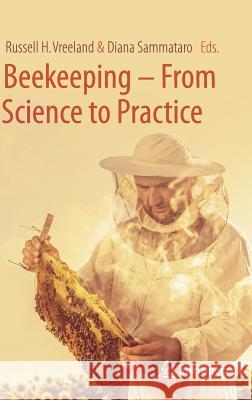


ISBN-13: 9783319606354 / Angielski / Twarda / 2017 / 213 str.
ISBN-13: 9783319606354 / Angielski / Twarda / 2017 / 213 str.
This book will help beekeepers understand the fundamentals of beekeeping science.
"The book has chapters covering a wide range of subjects from pests, pesticides, queen-rearing challenges, varroa resistance, epidemiology to propolis, American foul brood (AFB), sting allergy therapy and more. ... I found this book to be very interesting and it goes some way to elucidating our understanding of the individual immunity and the social immunity of bees. ... I hope that the book's format will be taken up by bee scientists in the future." (John Hill, President British Bee Veterinary Association, BBKA News, December, 2018)
"Many well-known bee scientists have contributed chapters to this new book with the aim of clearly explaining the fundamentals of bee science. ... This book is densely packed and will be very useful for the many beekeepers who want to be scientifically well-informed." (Bees for Development Journal, ISS. 127, June, 2018)
Nutritional supplements in Honey bee management (Diana Sammataro).- Fungi and Fungicides (Jay Yoder).- Role of nutrition on Honeybee queen Quality (Gloria D. Degrandi-Hoffman).- Population genetics of honey bees in the United States (Deborah Delaney).- Breeding and selecting Varroa resistant honey bees (Jeff Harris).- Varroa control and bee breeding for varroa tolerance (Y’ves Le Conte).- Pheromone priming in Honey Bees (Y’ves Le Conte).- Effects of microbial population differences in Honey Bees (Paul Niemczura, Russell Vreeland).- The phenomenon of swarm intelligence (SI): solving cognitive problems by a group (Kirk Vischer).- The benefits of propolis (tree resins) to Honey bees (Marla Spivak).- The role of Nosema disease in Colony Collapse Disorder (Marla Spivak).- Queen rearing and instrumental insemination (Susan Cobey).- Using epidemiology to understand and improve honey bee health (Dennis VanEnglesdorp).- Epidemiology and pathogenesis of honey bee viruses (Nor Chejanovsky and Yori Slabezky).- Foulbrood diseases in Honey Bees (Elke Genersch).
1997-2025 DolnySlask.com Agencja Internetowa







